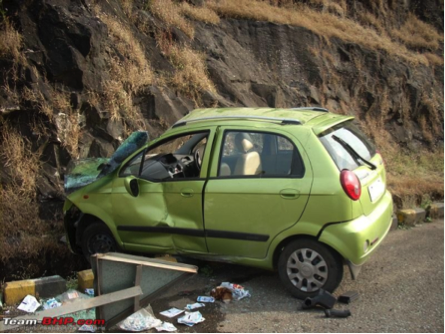The first phase of the Control stage in DMAIC is to develop a control plan. A control plan is a document that records how all significant process characteristics will be kept in line with the defined requirements. Before a control plan can be developed however, the improvement leader will need to consider what could go wrong with the process, as the controls need to be designed to detect this.
In this article we will look at a technique called FMEA (Failure Modes and Effects Analysis, and how it can be used to identify and reduce risk. Although an FMEA is typically used in the Control phase, it can also be used in Improve, or indeed in any phase where a structured approach to risk identification is required.
Why FMEA?

FMEA is a tool to help identify and manage risk. The thought process behind FMEA is implicit in any process or product design effort: teams and individuals continuously ask “what could go wrong?” and “how could problems be prevented?” FMEA is a structured way of ensuring this thought process happens which in turn helps identify and manage risk.
If FMEA is carried out correctly, it will reduce risk and in turn this will lead to:
· Improved Customer Satisfaction – through improving reliability and safety in general.
· Improved Thoroughness - increase the likelihood that all potential failures and effects will be considered.
· Reduced Development Effort - reduced product development time and cost.
What is FMEA?
FMEA is a product development or process analysis tool used to anticipate modes of failure and mitigate potential risk. FMEA is an approach used to eliminate, control, and reduce risk. The method is used to focus limited resources on critical design trade-offs and decisions leading to improved reliability, quality, and safety. FMEA will help to identify modes of failure, assess how likely they are to occur and their severity and determine the likelihood of detection. It will then calculate a quantitative score to be placed on the risk, and help to prioritise areas requiring action. Once the actions have been taken it will help to assess the action suitability and keep track of implementation progress.
Who, When and Where Used
Failure Modes & Effects Analysis (FMEA) is a tool which can be used to assess & address risks within the context of:
· Project/Program: Identifies what can go wrong with a major project
· Design: Identifies what can go wrong with the design of a product or service. Consideration for System, Subsystem, Component.
· Process: Identifies what can go wrong with a process
· Service: Identifies what can go wrong with a service function
· Application: Identifies what can go wrong with customers using your product or service
It can be used by design teams, process development or improvement teams, or in fact any team looking at something new where there is risk.
The Basic Idea
The basic idea with FMEA is to start with a design or material requirement, or process step, and think what could go wrong here? For example, if implementing a change to a process for assembling components, one of the components could be assembled the wrong way round.
Once the potential failure modes have been identified, the effect of the failure on the customer (which could include the next step in the process) is determined. In the example of our incorrect component, let’s assume that the effect would be a test failure.
Having established what could go wrong, and its effect, the FMEA approach then seeks to either prevent the problem from occurring by eliminating the cause of the problem (for example by putting in an error proofing device that prevents incorrect assembly) or increasing the chance of detecting the problem before it gets to the test, maybe a secondary check on the assembly process which would pick up the missing component.
The aim is to prevent the effect by preventing the cause of failure or detecting it early.
FMEA Approach
To build on what has been stated already, the approach for FMEA is:
· Function – identify the process step or design feature, and the requirements it is intended to achieve. For example consider a tyre fitted to car, the requirement is to remain inflated to give a supple ride and good road holding.
· Failure Mode – brainstorm ways in which the process step or design feature could go wrong, the ways in which it might fail to meet intended requirements. For the tyre example, the failure mode could be a burst tyre and sudden deflation.

· Severity – decide how severe the failure might be to the customer of the product or process. For the tyre, the failure mode would be potentially severe with loss of control of the vehicle that may cause a crash.
· Cause Occurrence – identify what might cause the problem to occur. For the tyre example, cause could be a defect in the sidewall.
· Detection – list the current controls on the process that would detect the problem before it became an issue for the customer. There may not be any detection methods existing for our tyre example.
The three areas of severity, likelihood of occurrence and detection are then scored marks out of 10, where 1 is the best case scenario and 10 the worst. The 3 numbers are multiplied together to give an overall number (maximum of 1,000, minimum of 1) called a risk priority number. The scoring was originally subjective, but some moves have been made over the years to make it less subjective.
The FMEA System Explained
The table below shows the scoring system used for most FMEA approaches...
To read the full article, please click here.
You need to be registered, but don't worry - it's free!